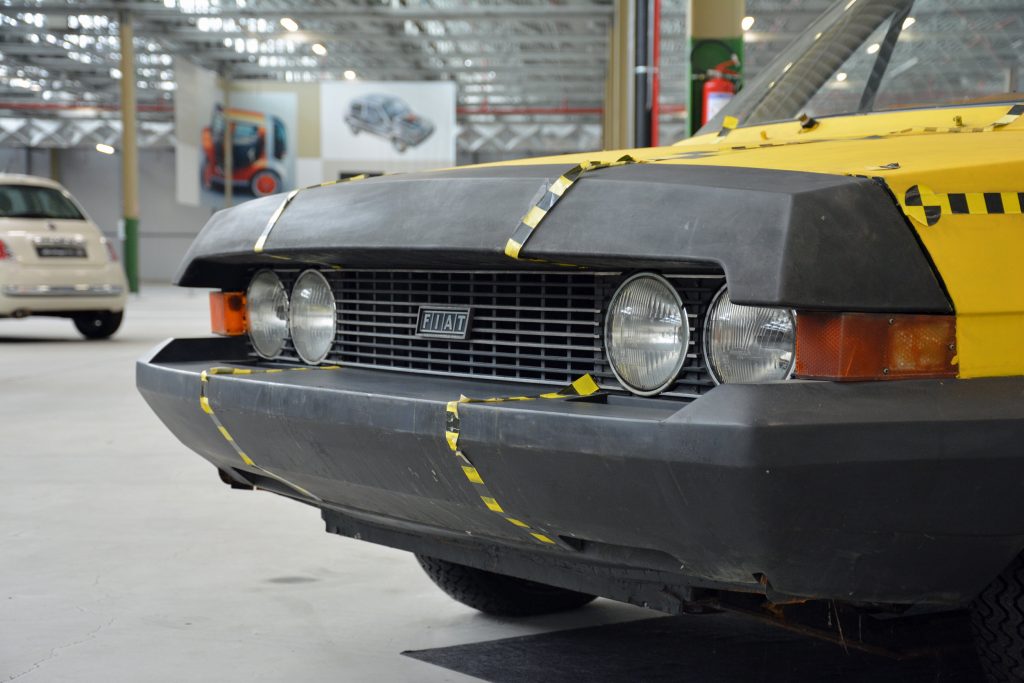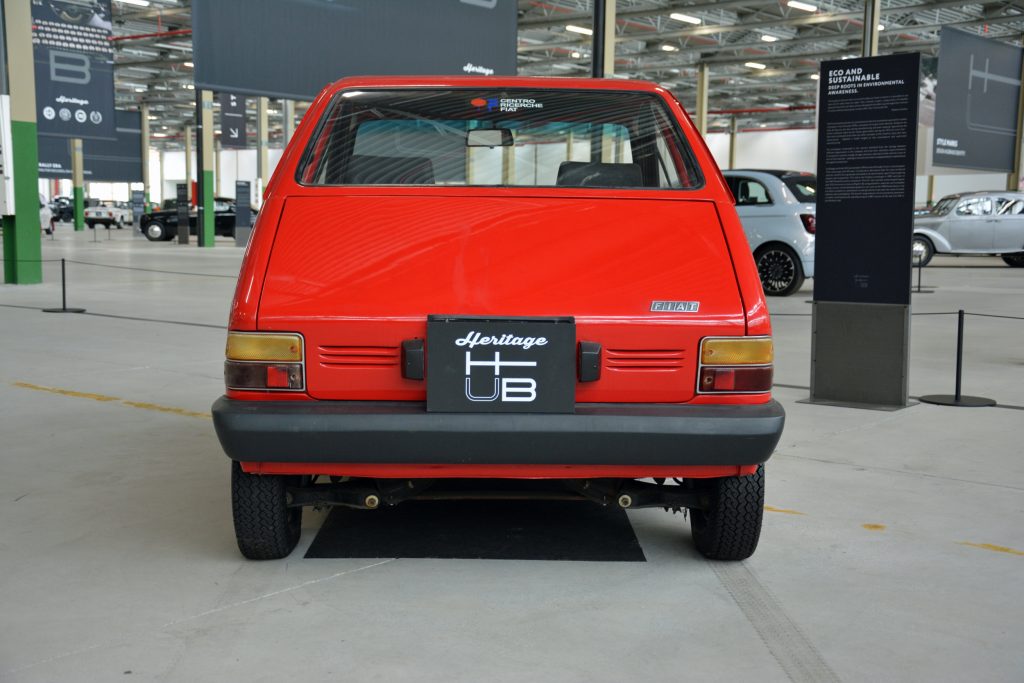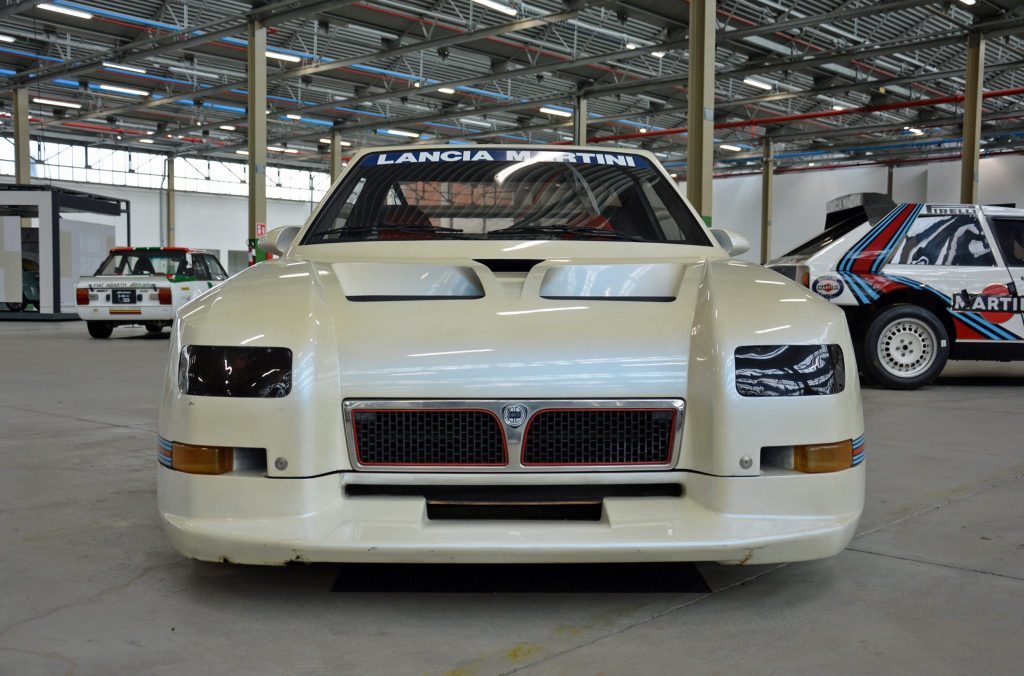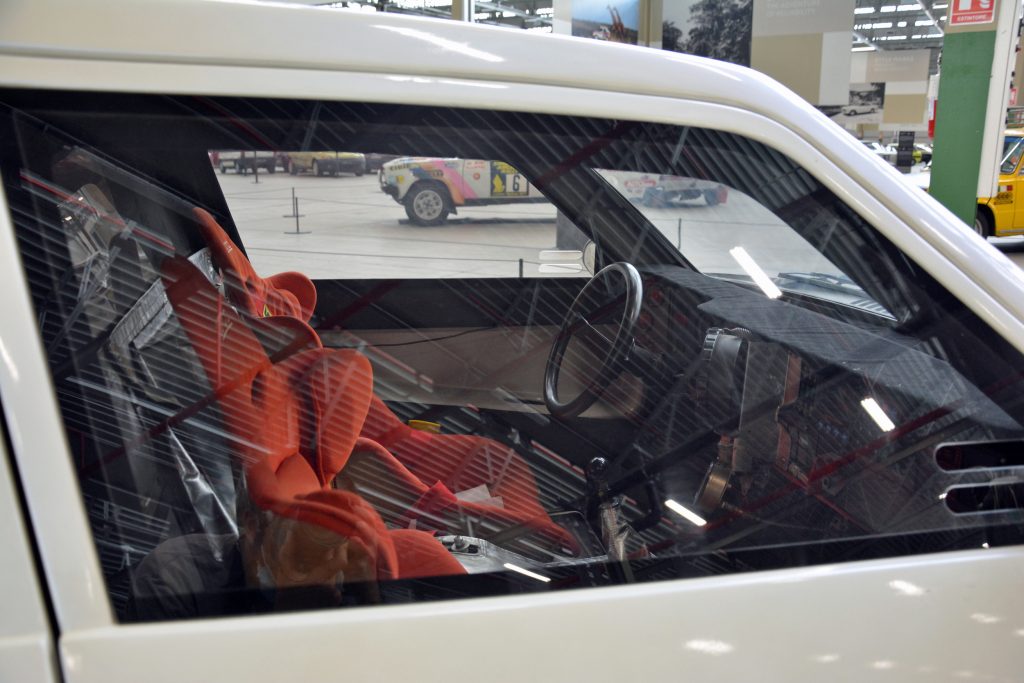Located on the outskirts of Turin, Italy, Fiat’s heritage collection is full of what ifs. What if the carmaker known for peddling pocket-sized city cars had made a Hummer? What if it had brought a Smart car-like two-seater to the market over two decades before the Smart brand appeared? Or, what if Lancia had been given the opportunity to continue racing prototypes in the World Rally Championship?
The fascinating answers to these questions are housed in a 161,000-square foot warehouse that’s part of Fiat’s Mirafiori engineering complex. Some of the 300-plus cars displayed are regular-production models – like the last Fiat 126 ever made – but it’s the unusual prototypes, the quirky one-offs, and the crazy concepts that caught my eye during a recent visit. Here are some of the stand-out vehicles in the firm’s Heritage Hub.

Fiat 100 (1951)

One of Fiat’s best-selling models, the 600 was the product of an extremely challenging design brief. Officials asked chief engineer Dante Giacosa to develop a four-seater that both weighed and cost less than the original 500 (also called the Topolino) – while offering better performance in a similarly compact package. These basic guidelines shaped Italy’s automotive landscape for decades.
Giacosa knew he couldn’t start with the familiar front-engined, rear-wheel-drive configuration. He experimented with front-wheel drive, but the layout was too complex to fine-tune. He instead moved the engine and the transmission to the back of the car to reduce the size of the front overhang.

Built in 1951, this 100 prototype is remarkkably close to the 600 released in 1955. Its headlights are integrated into the bonnet rather than mounted on the wings, and its rear lights are higher than the production car’s; but key points like its silhouette, dimensions, and basic mechanical layout remained unchanged.

Lifting the engine lid reveals one significant difference: while the 600 was launched with a water-cooled four-cylinder engine, the 100 was powered by an experimental air-cooled twin whose cylinders were set at a 150-degree angle, so it wasn’t completely flat. Giacosa even tested prototypes equipped with a semi-automatic transmission originally sourced from a Cisitalia single-seater race car, but he ultimately fitted the 600 with a conventional four-speed manual.
Lancia Loraymo (1960)
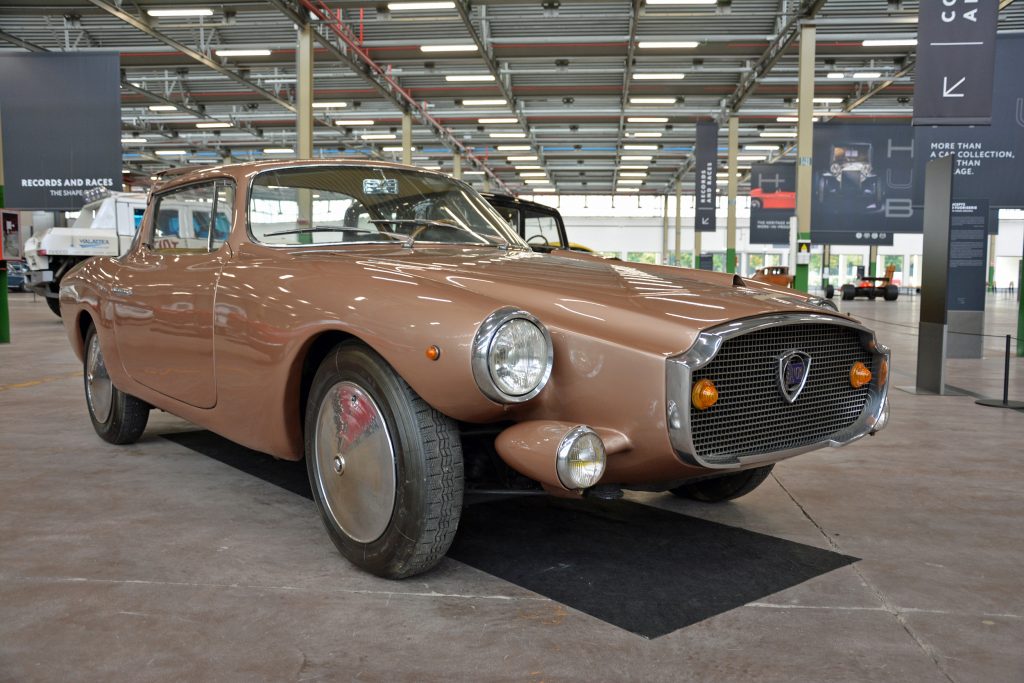
Coca-Cola’s 1955 bottle has one thing in common with the 1960 Lancia Loraymo, and it’s not a tendency to spray out its contents after it’s been shaken. Both were sketched by Franco-American designer Raymond Loewy, who also styled the Studebaker Avanti and various trains, tractors, Greyhound buses, stamps, light switches, corporate logos, fridges and numerous other household products.
Starting with a Flaminia Coupe, an upmarket four-seater that was rebodied by dozens of coachbuilders, Loewy penned a futuristic design characterised by an almost retro-looking front end, full wheel covers, and a wrap-around rear window. It stood proud at the unlikely intersection of timeless Italian elegance and the aerospace-inspired design that spread across the United States in the 1950s. It looked markedly different to the majority of other coachbuilt creations built on the Flaminia’s bones.
Turin-based coachbuilder Rocco Motto built the Loraymo’s body out of aluminum, according to Lancia’s archives department, and Nardi increased the 2.5-litre V6’s output from 119 to about 150 horsepower. Loewy named the coupe after himself (LOewy RAYMOnd) and displayed it at the 1960 Paris auto show. He then used it as his personal car, first in Europe and later in the United States.
Fiat ESV 1500 (1972)

Fiat participated in the Experimental Safety Vehicle (ESV) project announced by the American government in 1968. Lawmakers were genuinely worried about the rising number of traffic-related deaths recorded in America annually (52,725 people died in 1968; for comparison, 2018’s figure was 36,560). They hoped encouraging car companies to develop safer models would reverse the trend.
Prototypes were organised into four weight-based categories. Each one was assigned a specific set of goals that companies needed to meet. For example, some ESVs needed to keep passengers alive in a 50mph head-on collision with a solid obstacle, withstand side impacts at up to 30mph and survive two full rollovers at about 65mph. Handling was also tested: prototypes had to stop from 60mph in 155 feet, so carmakers couldn’t simply transform an economy hatchback into an armoured tank and call it a day.
Fiat’s entry into the lighter category was based on the humble, rear-engined 500 released in 1957, though parts like the doors came from the then-new 126 and it wore a three-box design like the 850. It received massive rubber bumpers on both ends, black paint around the windshield to reduce glare, and a padded dashboard that gave the front passengers something reasonably soft to strike, among many other modifications. The ESV 1500 performed well in most tests, and it earned high marks in the pedestrian safety category, but it was more than 100kg heavier than the 680kg limit. A total of 13 prototypes were built, and most ended up being slammed into walls.
Fiat ESV 2000 (1972)

Fiat’s second ESV prototype was a highly modified evolution of the innovative 128 built for the 2000 pound (900kg) category. Like the ESV 1500, it looked nothing like the model upon which it was based; engineers couldn’t create an ostensibly death-proof car and make it look sexy. There was no easy, elegant way to hide the giant bumpers and the plastic cladding above the rocker panels. Everything inside was padded to increase the odds of surviving a high-speed crash.
Power came from a 1.3-litre four-cylinder shared with the 128, but the carbureted engine had a lot more weight to wrangle. While the regular-production sedan weighed about 1670 pounds (760kg), the ESV 2000 tipped the scale at 2563 pounds (1162kg), meaning it landed well outside of the 2000-pound (900kg) category. In Fiat’s defense, it’s worth noting that nearly all of the manufacturers who participated in the ESV program struggled with the weight cap.
None of the ESVs built during the 1970s directly spawned a production car, though Volvo, whose revenue streams were not heavily dependent on design, boldly integrated many of its prototype’s features into the 200 Series launched in 1974. Some of the lessons learned from Fiat’s projects later permeated the Ritmo. It was released on the European market in 1978 with plastic bumpers that were unusually large and also featured recessed lights on both ends.
Fiat X1/23 (1972)

Fiat introduced the X1/23 at the 1972 Turin motor show to demonstrate how it could fill the sliver of space that separated a Piaggio Vespa from the pocket-sized 500. Essentially a bubble car for the 1970s, the X1/23 was a two-seater that was about the same size as a first-generation Smart ForTwo.
Engineers integrated a full safety cell into the body to protect the occupants if the X1/23 was involved in an accident with a larger and heavier car – like, say, an Autobianchi A112. Its interior was an exercise in minimalism that put the driver in front of a single-spoke steering wheel (Fiat was getting cozy with Citroën at the time, after all) and a small instrument cluster with five gauges. Because its doors’ windows were fixed, it was equipped with an air conditioning system. Fiat kept technical specifications under wraps, but the star of its stand was undeniably futuristic.
No one expected to see the X1/23 after the Turin show closed its doors. Nothing suggested it would influence a production model, let alone reach showrooms without any modifications. Still, Fiat unveiled the X1/23 again in 1974, and the red paint denoted the presence of an electric powertrain that consisted of a nickel-zinc battery pack installed over the rear axle and a 13bhp motor that zapped the front wheels into motion. It had a top speed of about 45mph and could travel for approximately 31 miles on a charge, figures that were sufficient for city driving in the 1970s.
Neither version of the X1/23 received a green light for production, though its hemisphere-shaped exterior door handles later ended up on the Ritmo. Fiat stayed out of the microcar segment – it replaced the 500 with the 126 and chose not to go any smaller – but it timidly ventured onto the electric car scene when it a battery-powered version of the original Panda in small numbers starting in 1990.
Fiat-Abarth 131 Diesel (1977)

Fiat instructed Abarth, one of Italy’s best-known purveyors of all things fast, to transform the 131 into an endurance racer capable of at least surviving – and, hopefully, winning – the 1977 edition of the London-to-Sydney rally. Company founder Carlo Abarth must have laughed at such an easy request, until someone at Fiat clarified he needed to start with the then-new diesel-powered variant of the car.
Abarth had put his name on dozens of models since its inception, and none ran on diesel. Nevertheless, because the London to Sydney rally wasn’t a flat-out race, the firm decided to make only minor modifications to the standard 2.4-litre four-cylinder engine. Stout, basic, and naturally-aspirated, it sent 70bhp and 108 lb-ft of torque to the rear wheels. Abarth added a pair of lights to the front end, plus bonnet pins, mud flaps, a full roll cage, and and grafted on wheels from the successful, petrol-powered 131 Abarth rally car.
Four diesel-powered 131 racers were built and three were entered in the London to Sydney race. Two made it all the way to the Australian capital via Milan, Athens, Istanbul, Teheran, Kabul, Singapore, and Perth. They finished 15th and 23rd overall, respectively, but more importantly they placed first and second in the diesel category. They covered nearly 19,000 miles (often on unpaved roads dotted with potholes big enough to boil a lobster) in just 45 days. Fiat often highlighted these results in its late-’70s marketing material as buyers pivoted towards fuel-sipping diesel engines.
The 131’s diesel engine went on to have a surprisingly successful career. Dubbed 8140 internally, it was developed by Società Franco Italiana Motori (SOFIM), a joint-venture created by Fiat, Alfa Romeo, and Renault. Different iterations powered sedans like the Fiat Croma, the Lancia Thema, and the Renault Safrane, plus a diverse array of commercial vehicles including the Alfa Romeo AR6, the Iveco Daily, the Renault Master, and the Saviem SG. It remained in production until 2006.
Lancia Trevi Bimotore (1984)

Lancia is currently following the grim path blazed by Autobianchi, one that leads straight to the pantheon of automotive history. Its line-up has been reduced to a single model (the 500-based Ypsilon) that’s sold exclusively in Italy, and its future is uncertain at best. In brighter times, it stood proud as one of the most successful names in rallying thanks largely to the Stratos and the 037. Audi’s four-wheel-drive Quattro threatened its glory in the early 1980s, so Lancia began experimenting with four-wheel drive to fight back.
Giorgio Pianta, a test driver who worked as Abarth’s team manager, turned a Beta-derived Trevi into Lancia’s first four-wheel-drive car simply by installing a second engine in the space carved out for the rear seats. It was a supercharged, 2.0-litre four-cylinder identical to the engine found under the bonnet, and it was tuned to send about 150bhp to the back wheels via a manual transmission.
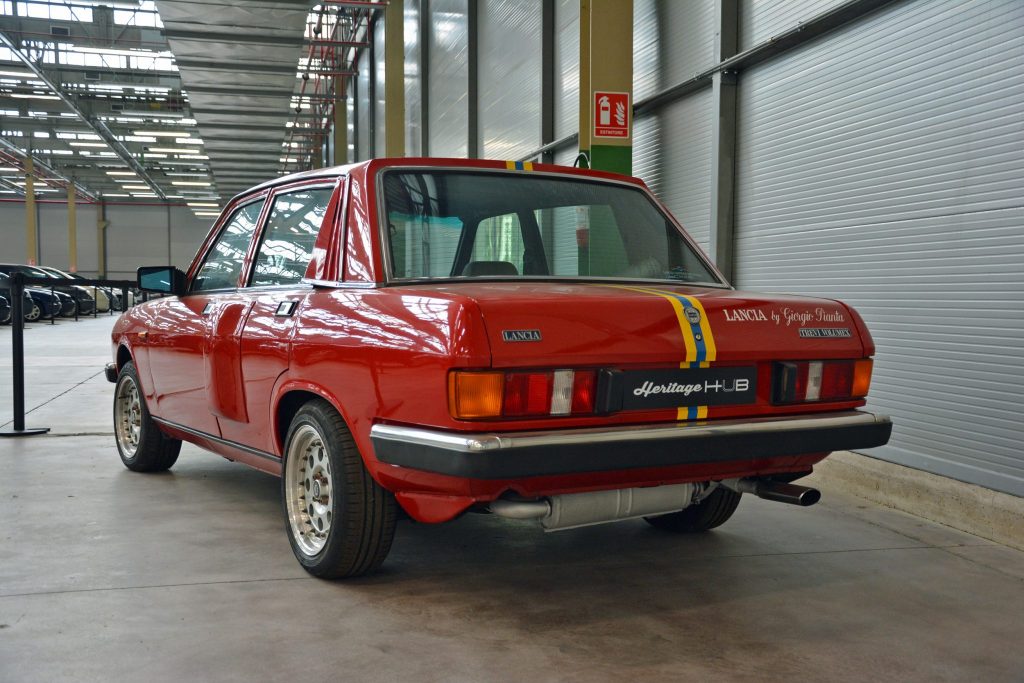
Although the engines operated independently, the gearboxes were connected so the driver could shift both simultaneously by using a single lever and one clutch pedal. Interestingly, the accelerator pedals were linked by software that delayed power delivery to the rear axle to reduce the two-headed Trevi’s tendency to oversteer. After replacing the speedometer with a second tachometer, Pianta got behind the wheel of the 300bhp Frankensteined saloon and put it through its paces.
Lancia’s archives department notes the extra engine made the Trevi Bimotore fabulously quick, and the layout improved its weight distribution. It also added an unacceptable amount of weight, and the car had a tendency to overheat in spite of the air vents cut into its welded rear doors. Rigorous testing convinced Pianta that four-wheel drive was the right way forward, but that the twin-engined layout was the wrong strategy. Instead, Lancia made a four-wheel drive Delta, which won six consecutive WRC titles.
Lancia ECV 2 (1988)

As early as 1985, World Rally Championship (WRC) officials planned to supersede Group B with an even wilder category called Group S. One of the most important differences between the two classes was that looser homologation requirements promised to make racing in S much cheaper while encouraging carmakers to experiment with innovative, high-tech ways to gain a competitive edge. Many companies began dabbling in then-cutting-edge composites in order to make their cars lighter and quicker.
Lancia built the Experimental Composite Vehicle (ECV) 2 prototype to gain knowledge about materials like carbon fibre and Kevlar. It saved money by chopping up the original ECV prototype (which was later recreated) and using its chassis as the new project’s foundations. Manufacturing components like the body, the driveshafts, and the rims with composites made the ECV 2 about 20 percent lighter than even a Delta S4.

While the Delta S4 was vaguely shaped to look like the regular-production hatchback, the ECV 2 was designed as a rally beast that had to prove its mettle on one of the highest echelons of racing. It was fitted with a twin-turbocharged, twin-intercooled 1.8-litre four-cylinder engine that put approximately 600bhp under the driver’s right foot. The mid-mounted four-pot sent the ECV 2 to about 175 mph.
Group S cars were scheduled to make their competition debut during the 1987 WRC season, but they wouldn’t have been able to score points; they were supposed to take their first real shot at the championship in 1988. Lancia should have battled against Audi, Ford, Mazda, Peugeot, SEAT, and Toyota, among others, but WRC’s sanctioning body abruptly canceled Group B and Group S in late 1986 due to safety concerns. The decision created such an uproar that Peugeot sued the FIA – and lost.
Fiat Oltre (2005)

In 2005, when the Bologna motor show still appeared on the industry’s radar, Fiat travelled to the event to make a splash with a concept named Oltre. Its off-road capacity was at least on par with the Hummer H1’s, and its bling quotient easily surpassed the H2’s. Don’t let the Cinquecento-sourced rear light lenses fool you; nothing under the body came from the Fiat parts bin. Instead, the Oltre got many of its mechanical parts from the Iveco Light Multirole Vehicle (LMV) used globally by over a dozen armies.
Power came from a four-cylindre, 3.0-litre turbodiesel engine tuned to 185bhp and a stout 336 lb-ft of torque. It spun the four wheels via a six-speed automatic transmission, and it propelled the Oltre (which weighed about 3175kg and was considered a heavy-duty vehicle) to a top speed of about 80mph. In hindsight, the reasons that led Fiat to introduce this slab-sided, blue-windowed monster truck are a little but murky, but what’s certain is that its life was unusually eventful.
Although it made its global debut on SEMA-approved 26-inch chromed alloys, it later received a set of steel wheels wrapped by chunky Pirelli tyres and was let loose in the Alps. It was a concept, and not a very realistic one, but its oily bits came off a production line and the high-riding beast was fully functional. Various members of Fiat’s executive team took the Oltre off-roading near an Italian ski resort named Sestriere before deciding to steer clear of the military-spec, street-legal off-roader segment and focus on smaller cars.
Via Hagerty US







